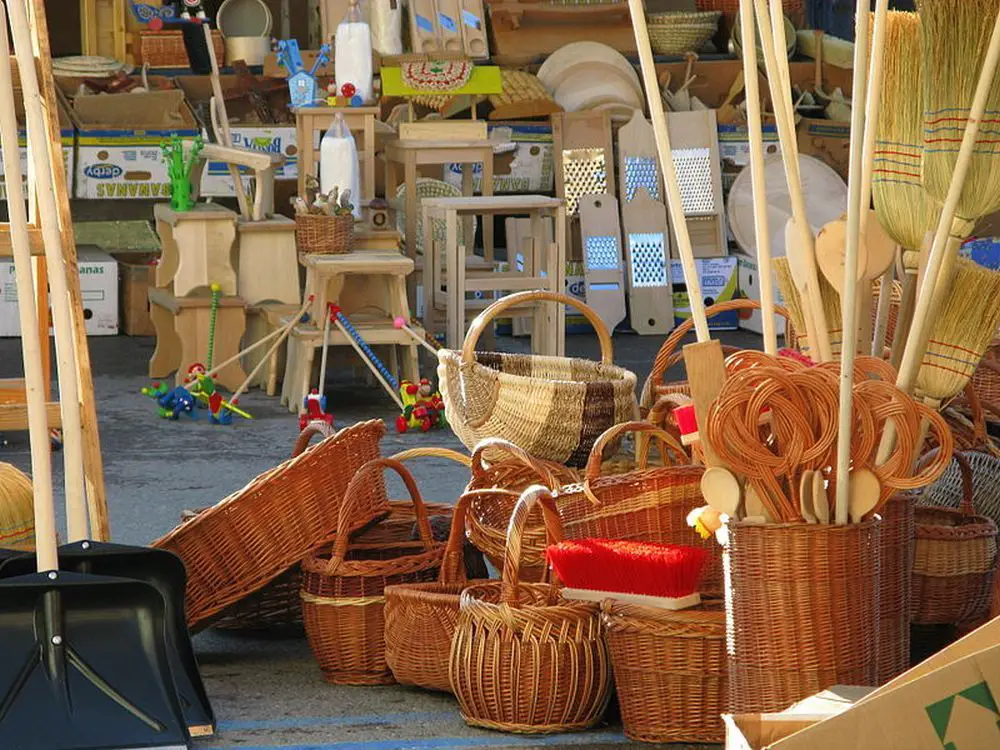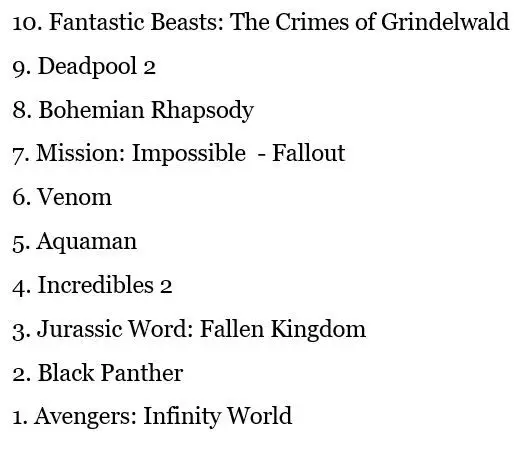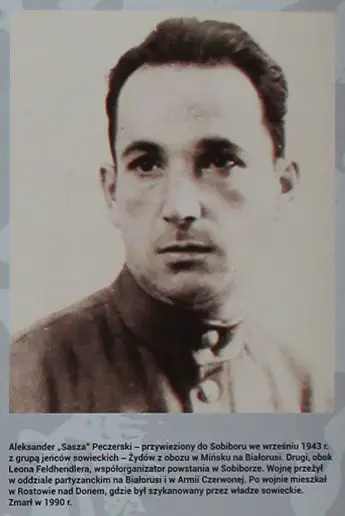News
We thus present two lists of the top grossing movies for 2018, one based on the overall figures for Slovenia as obtained from Box Office Mojo (with the full list of over 170 titles here) – and the other from Kinodvor, who sent us their top ten by ticket sales, for a look those films enjoyed without a bucket of popcorn or gallon of Coke.
Before we get to the top ten movies in Slovenia by box office gross for 2018, let’s take a look at the global top 10, with only four titles appearing in both lists.
Worldwide Top 10 by Box Office, 2018. Data from Box Office Mojo
Worldwide, moviegoers had a strong preference for comic book movies, with five films based on Marvel or DC characters, while there’s only one of these in the Slovenian top 10. However, an incredible nine of the top 10 movies both worldwide and in Slovenia were either a sequel or adaptation, with the odd one out in both lists being Bohemian Rhapsody.
Here’s the countdown of the top 10 movies in Slovenia for 2018, as decided by ticket purchases:
10. Avengers: Infinity War
9. Jurassic World: Fallen Kingdom
8. Incredibles 2
7. Johnny English Strikes Again
6. A Star is Born
5. Fifty Shades Freed
4. Dr. Seuss' The Grinch
3. Mamma Mia: Here We Go Again!
2. Hotel Transylvania 3: Summer Vacation
1. Bohemian Rhapsody
Leaving behind the multiplex for more niche fare, we got in touch with Ljubljana’s top arts cinema, Kinodvor (not far from Kinoteka, the leading archive and home of classic and experimental film), and they kindly gave us their top 10 by ticket sales for 2018, with the countdown being as follows:
10. Don't Worry, He Won't Get Far on Foot
9. Muškarci ne plaču
8. Un beau soleil intérieur
7. The Children Act
6. Todos lo saben
5. Cold War
4. The Last Ice Hunters
3. Družina
2. Gajin svet
1. Three Billboards Outside Ebbing, Missouri
If you enjoyed watching any of those trailers, then check out our weekly guides to what’s on in Ljubljana, where you can see a selection of those from movies playing in the capital this week.
A Slovenian team, working for the Piran-based organisation Morigenos, has discovered that the common bottlenose dolphins (Tursiops truncatus) living off the coast share the Bay of Trieste, dividing it based on time of day rather than territory, the first time such behaviour has been observed.
A paper published in the journal Marine Biology, “Behavioural and temporal partitioning of dolphin social groups in the northern Adriatic Sea”, and written by Tilen Genov, Tina Centrih, Polona Kotnjek, and Ana Hace, outlines how the researchers carried out their work, and what they learned. The team used the distinctive features on the dorsal fins of 38 dolphins to keep track of each individual, noting when and where the animals were sighted in the bay. An analysis of the data showed that the dolphins were divided into two groups of 19 and 13, with the remaining six making up a loose group of its own. The larger group of dolphins tended to following fishing trawlers between the hours of 07:00 and 3:00. In contrast, the smaller group of 13 were seen swimming with the trawlers, and hunted in the bay between 18:00 and 21:00. Dolphins from each group were rarely in the same area at the same time.
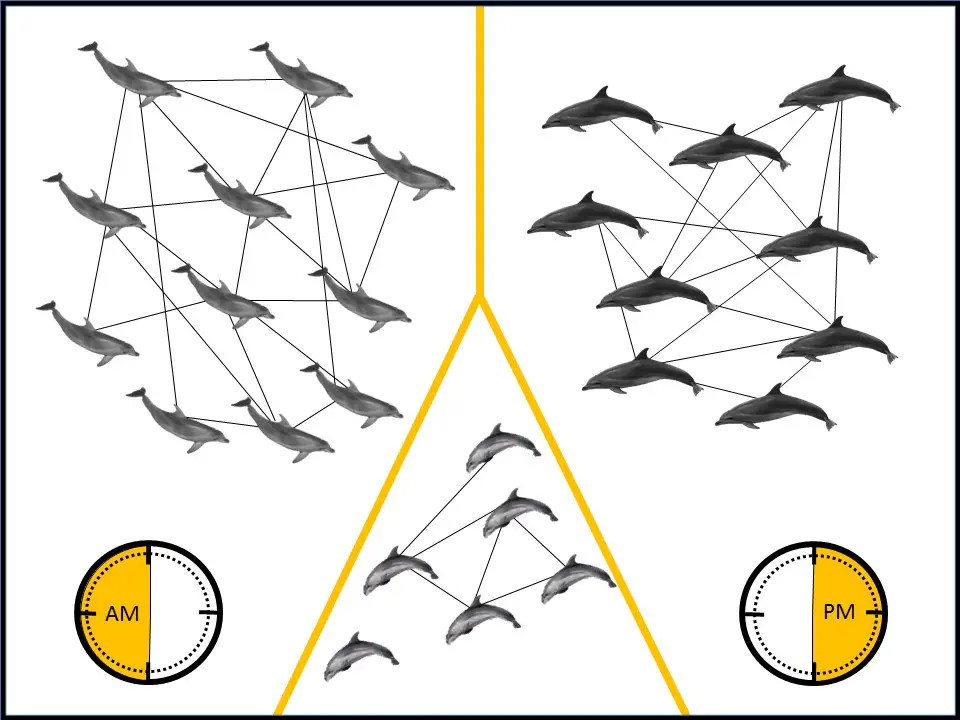
Source: Tilen Genov
In addition to revealing such temporal segregation for the first time in this species, the study is of interest because – as the paper concludes – “We demonstrate how different segments of the same population may behave very differently and have differing effects on human activities such as fishing (through potential depredation or gear damage). In turn, they may respond differently to anthropogenic pressures, as temporal partitioning may make animals either more or less vulnerable to disturbance from boat traffic.”
The full paper can be found here, while those interested in learning more about Morigenos can read an earlier story about the organisation here. The study reported in this story is also summarised in a short and relatively simple Slovene-English dual text here.
STA, 17 January 2019 - Its waters sparkling in the sun, the Alpine Lake Bled is considered the epitome of picture-perfect and millions have photographed the vista with the island and the little church perched on top. But look below the glistening surface, and the picture is much murkier.
The lake ecology has been deteriorating, mostly due to the surge in swimming, fishing and boating, and rapid development of the lake shoreline. The lake water has long been designated as good or acceptable, but by 2021 it may fall afoul of the water quality standards prescribed by the EU, according to the Environment Agency.
Tourism is putting pressure on local infrastructure
For waters to improve, it is necessary to reduce the intensity of the use of the lake area. "A sustainable improvement and stabilisation of the situation in the lake can only be achieved by removing the causes of pollution and by taking measures to reduce the intensity of the use of the lake area," said Špela Remec Rekar a limnologist (inland water researcher) at the Environment Agency who has been monitoring Lake Bled water quality for several years.
She notes that the number of tourist nights in Bled had almost trebled between 1994 and 2016. Traffic on and around the lake has surged, and there are more and more swimmers and fishermen. Infrastructure, including sewage, has not been keeping up with the increase in visitors.
Remec Rekar said that aside from improving sewage, traffic around the lake should be scaled back and the bird population reduced. But the most important measure would be to ban the feeding of fowl and fish.
Fish feed a problem for the water
Fish feeding has been a major factor in the deterioration of water quality. The law stipulates that each fisherman may bring in five kilo of carp fodder per day, which for Lake Bled amounts to over ten tons of nutrients being introduced to the water each year. This drives up phosphorous levels and supports the development of dangerous cyanobacteria.
The municipality is aware of the problem and is already mulling limiting carp feeding, but it says this is a process. "We have to join forces with all stakeholders and determine what is possible, sensible and feasible," said Tomaž Rogelj, the director of the Bled Tourism Office.
Last year the municipality bought an electric boat for cleaning the lake surface, which removes organic waste such as leaves as well as man-made pollutants. But Remec Remškar says that given the size of the problem, this is a negligible improvement.
STA, 17 January 2019 - An exhibition on Soviet World War II officer Alexander Pechersky, who led the uprising at the Sobibor extermination camp, will go on display at the Maribor Synagogue tonight, accompanied by the screening of the Russian film Sobibor, as an overture to the observation of International Holocaust Remembrance Day.
The exhibition and the film by Konstantin Khabenskiy, Russia's candidate for the 2018 foreign language Oscar, cover the mass escape of Jews from the Sobibor extermination camp in Poland in 1943, organised and led by Pechersky.
Although only 53 of those who escaped survived, it was the most successful break from a World War death camp. The camp itself was ordered by the SS chief Heinrich Himmler to be closed, dismantled and planted with trees within days after the uprising.
Alexander Pechersky – Wikipedia
The event is being organised by the Maribor Library and Centre of Jewish Cultural Heritage Synagogue Maribor in association with the Ljubljana-based Russian Centre of Science and Culture, the Russian Centre in Maribor, International WWII Research Centre in Maribor and the Association of History Students ISHA Maribor.
The event will officially launch this year's observation of International Holocaust Remembrance Day as part of the project Shoah - Let Us Remember 2019 in Slovenia with Culture Minister Dejan Prešiček as honorary sponsor.
The project involves a number of cultural, research and education institutions. Every year they hold exhibitions, scientific conferences and various cultural events to keep alive the memory of the victims of the Holocaust, Porajmos, Nazi persecution and genocide in general and to warn of instances of hatred and intolerance that could lead to crimes against humanity.
International Holocaust Remembrance Day, observed on 27 January, will also be observed by an event hosted by the ZZB NOB association of WWII veterans this Sunday at the Kino Šiška urban culture centre in Ljubljana. It will be addressed by Maca Jogan, a University of Ljubljana professor emeritus, who was born in the Lössnitz labour camp.
All our posts on Jewish Slovenia can be found here
STA, 17 January 2019 - Slovenia will promote its growing brewery industry at the International Green Week (IGW) in Berlin, one of the biggest agricultural and food exhibitions in the world. Kicking off on Thursday, the 84th IGW will feature more than 1,700 exhibitors and will be accompanied by an agriculture ministerial attended by Slovenia's Aleksandra Pivec.
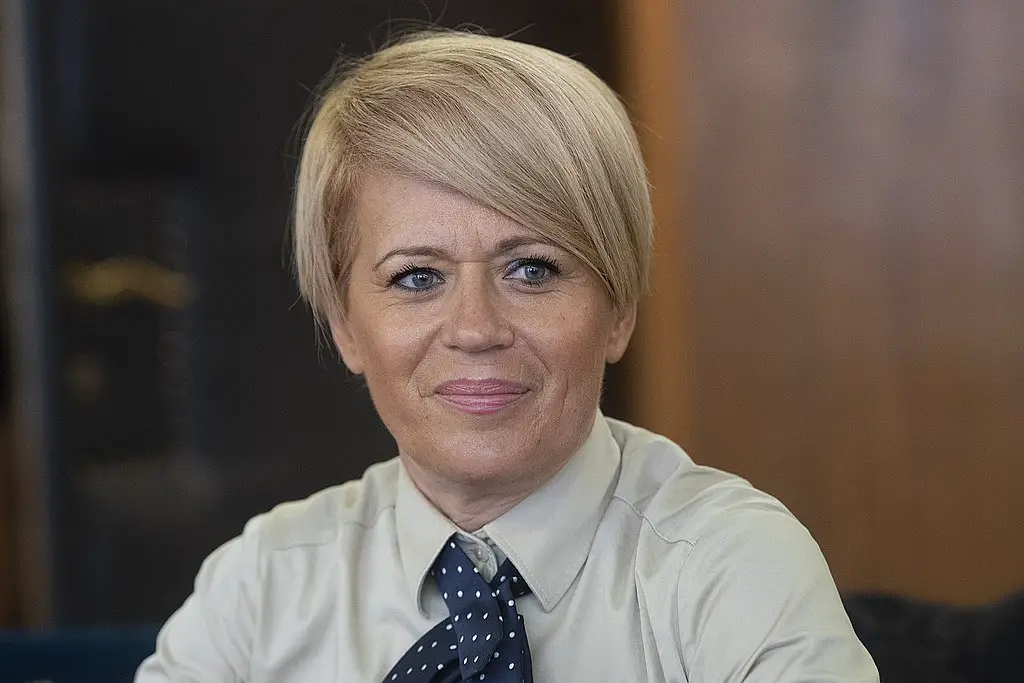
Aleksandra Pivec. Wikimedia: STA, CC-by-4.0
Slovenia's stall will feature micro breweries Vizir, Tektonik, Hopsbrew, Adam Ravbar, Maister, Ressel, Green Gold, Reservoir Gogs, Barut Brewing, Frizi Beer, Castra and Človeška Ribica, as well as the country's biggest brewery, the Heineken-owned Pivovarna Laško Union.
The stall will also feature hop-growing companies and associations from Slovenia, as well as three start-up companies: plant pot maker Urban Planty, aromatic salt maker Barba Sol and chili pepper grower Gorki Chili.
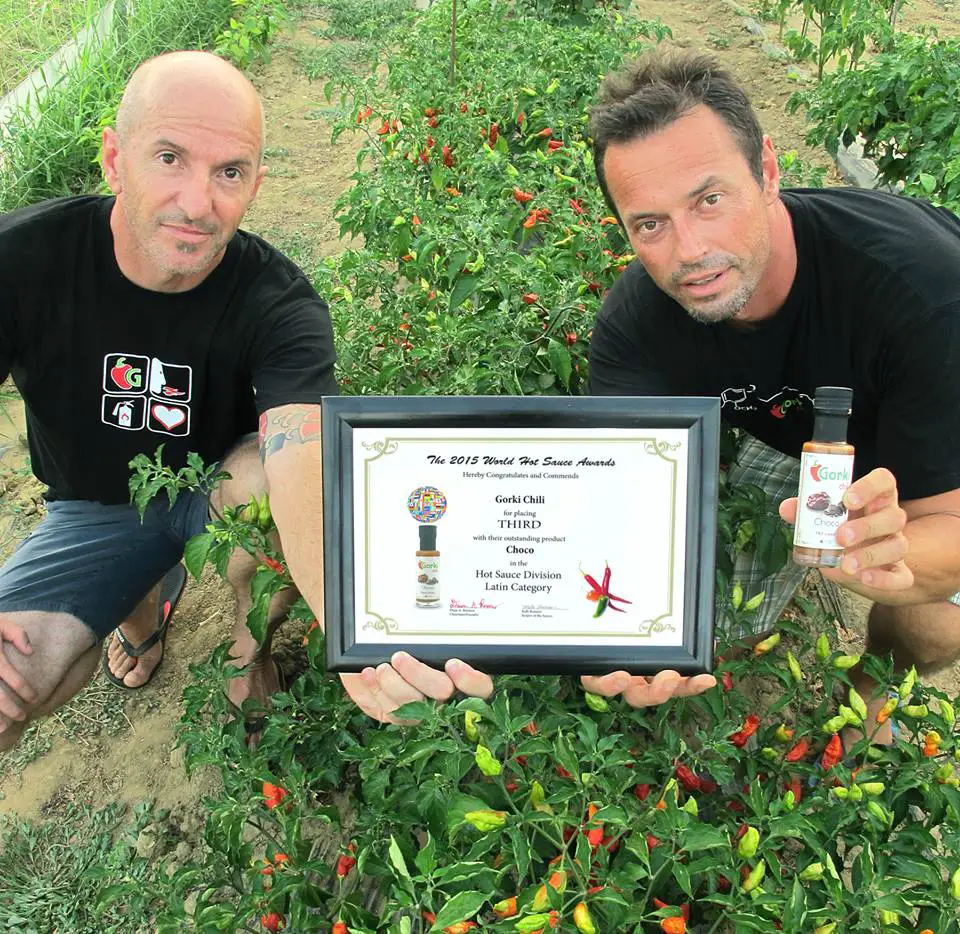
Photo: JL Flanner
Read our story on Gorki Chili here
Pivec will attend the opening on Thursday and will stay in Berlin until Sunday. On Friday, she will hold bilateral meetings, among others with Jose Graziano da Silva, the head of the UN Food and Agriculture Organisation (FAO).
On Saturday, she will attend the agriculture ministerial hosted by German Food and Agriculture Minister Julia Klöckner. The high-level meeting will focus on digitalisation in agriculture. The ministerial will also discuss young farmers, small farms and family farms, which are priorities of the FAO.
Pivec will wrap up her trip by meeting Slovenians living in Berlin on Sunday.
Watch three men try too many Slovenian craft beers here
STA, 16 January 2019 - Migration flows are becoming increasingly important for the Slovenian economy, the central bank says in its monthly bulletin. Banka Slovenije notes a workforce shortage for occupations requiring intermediate qualifications, meaning that employers have started to hire foreign citizens.
"With Slovenians moving away, the hiring of foreigners has preserved a positive net migration since 2015."
Related: Foreigners now hold 10% of the jobs in Slovenia
"However, on average the structure of the foreign worker population in terms of education and vocation is poorer than that of domestic workers."
Unless Slovenia starts producing higher value added and introduces direct measures to prevent brain drain, the country's productivity growth could become too low to keep up with the most developed countries, and the effects of an ageing population all the more pronounced, Banka Slovenije said.
Brain drain is lost potential for the state that has invested into the education of highly-trained work force now leaving the country, it added.
Related: 1 in 8 residents of Slovenia is now a resident
The central bank believes brain drain happens for a number of reasons, among them a relatively low value added of a large part of the economy.
Also touching on exports, the bulletin says that the international environment is becoming less advantageous for Slovenia's exporters, as growth in the EU as well as globally has been slowing down.
Although the estimate of economic growth for Slovenia's trade partners is somewhat lower than in 2018, the outlook still indicates "solid conditions" for the exporting companies.
STA, 16 January 2019 - Slovenia will play along Russia, Finland, Turkey, Macedonia and Belarus in Pool C of the preliminary round of this year's Men's European Volleyball Championship that the country co-hosts in Ljubljana's Stožice Arena, a draw in Brussels determined on Wednesday.
As the co-hosts of the tournament, to be held between 13 and September 29, Slovenia had been put in Pool C, with France getting to host Pool A, Belgium Pool B and the Netherlands Pool D.
Slovenian fans in Stožice Arena will thus have the opportunity to see the defending European champions Russia as they were drawn in Pool C today.
"We certainly did not want Russia, while the other teams are acceptable. I think that we have a good group," Metod Ropret, the head of the Slovenian Volleyball Association, told reporters from Brussels.
Ropret avoided answering the question who will coach Slovenia at the tournament. "We have a coach, but the question is for how long we will have it. More will be known soon," he said referring to the current head coach Slobodan Kovač.
Assistant coach Sebastijan Škorc said in Ljubljana that "the group is attractive, also because of the Russians. Them and us are the favourites of the group."
Top four teams from each of the four groups will advance to the single-match elimination round of 16, with the teams from the Ljubljana group getting opponents from the French group.
It will be the first European championship in volleyball to feature 24 teams. The final match will be played in Paris, while one of the semi-final matches will be played in Ljubljana.
- Preliminary round pools:
A (France):
France, Italy, Bulgaria, Portugal, Greece, Romania
B (Belgium):
Belgium, Serbia, Germany, Slovakia, Spain, Austria
C (Slovenia):
Slovenia, Russia, Finland, Turkey, Macedonia, Belarus
D (Netherlands):
Netherlands, Poland, the Czech Republic, Estonia, Ukraine, Montenegro
Below is a review of the headlines in Slovenian dailies for Thursday, January 17, 2019, as summarised by the STA:
DELO
Science funding
"Four tenths of a percent for the secrets of superconductivity": Even though Slovenian scientists are recording major achievements, funding for science remains insufficient to facilitate a true scientific breakthrough. (front page, 3, 7, 13)
UK confidence vote
"Theresa May remains prime minister": The British government has survived a no confidence motion as expected. This gives it some time to look for alternatives to the Brexit divorce agreement. (front page, 4, 7)
Elderly care
"Slovenian elderly homes full, what's the situation in Austria?": In Slovenia there is a shortage of elderly care facilities and extra services beyond basic care are rarely covered by health insurance. In Vienna, there is a special social fund to cover the difference. (front page, 12)
Skiing
"Vonn knows Ilka will pose the greatest challenge": This weekend will be interesting in the women's Alpine Skkiing World Cup, as the Slovenian Ilka Štuhec faces the American Lindsey Vonn, who will make a return after a long absence due to injury. (front page, 18)
DNEVNIK
No confidence vote in British Parliament
"Theresa May remains in increasingly precarious PM seat, but how much longer?": The Conservative UK government survived the no confidence vote with just just a 19-vote margin yesterday, leaving Prime Minister Theresa May even weaker than she was. (front page, 2)
Property tax
"Time until 30 January to change data, then comes the assessment": Property owners have until 30 January to change any data on their property before the Financial Administration assesses the fee for the use of building land, the Slovenian version of property tax. (front page, 9)
FINANCE
Tax evasion
"EUR 300 for Ljubljana rental? FURS may not believe you": The Financial Administration (FURS) suspects that some property owners report unrealistically low rental income. Tax inspectors may conduct additional checks if they suspect owners are lying. (front page, 2, 3)
Household saving
"Slovenians still squirrelling money in banks": Data for January-November 2018 shows household bank deposits continue to grow, although lending to households has been increasing as well. (front page, 10)
Brexit
"What Slovenian businesses are more concerned about than Brexit": Slovenian companies doing business with the UK are not afraid of Brexit as such, they are more concerned about political instability in the UK. (front page, 4, 5)
VEČER
UK no confidence vote
"Snub and confidence": A day after voting down the Brexit divorce deal, the British House of Commons rejected a no confidence motion against PM Theresa May. While this allows Great Britain to avoid a snap election, the fate of Brexit remains in the air. (front page, 2, 3)
Infrastructure investment
"Progress without victims": A meeting between the Infrastructure Ministry, motorway company DARS and Koroška mayors has resulted in the consensus that the time frame for the Third Development Axis must remain the same, with construction works slated to begin on selected sections this year. (front page, 13)
Taxes
"Year of tax expectations": There are no tax changes taking effect this year, but the government has announced an overhaul of the tax code effective as of 2020. (front page, 5)
Ljubljana isn't a 24-hour city, and you're not going to get fine dining at 3am. You understand these realities, and are aware this is not what you should be doing. That whatever you did to end up here, at this time and in this condition, must have been a significant jolt to the system. And what you need is a place to chill out, a bite to eat and maybe a beer, a person who’s not going to ask what you’ve been doing or why you aren’t in bed, but simply what you’d like to order.
Related: Five places to buy cigarettes at night in Ljubljana
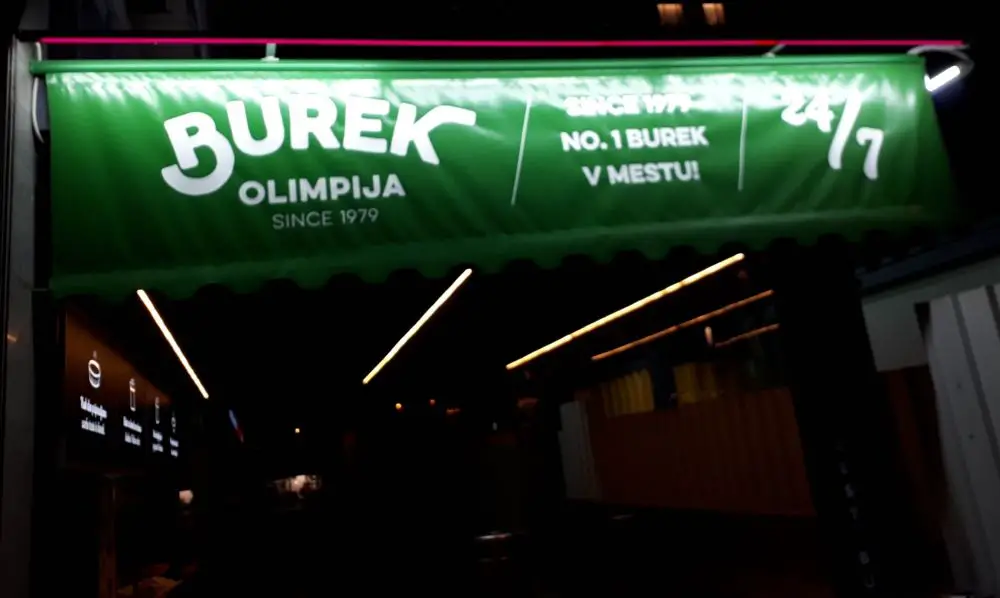
Burek Olimpija is a little hard to find, but not far from the train station or Intercontinental Hotel. Photo: JL Flanner
Whenever the hunger strikes you, at 5 after midnight, 3am or 6, there are just a few places where you be assured of a welcome in Ljubljana, with lights, people and commercial activity focused on the provision of carbohydrates, protein, and fat, seasoned with sugar and salt. Pizza, burek, kebab, burger and fries. Soda, coffee and beer. You know the kind of places.
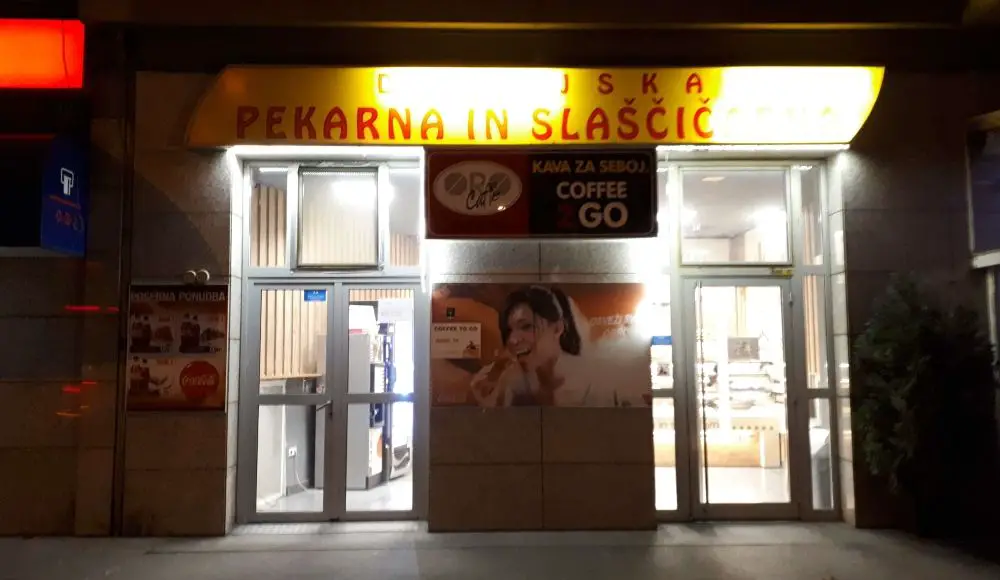
Baked good and coffee, but no seats, opposite the station. Photo: JL Flanner
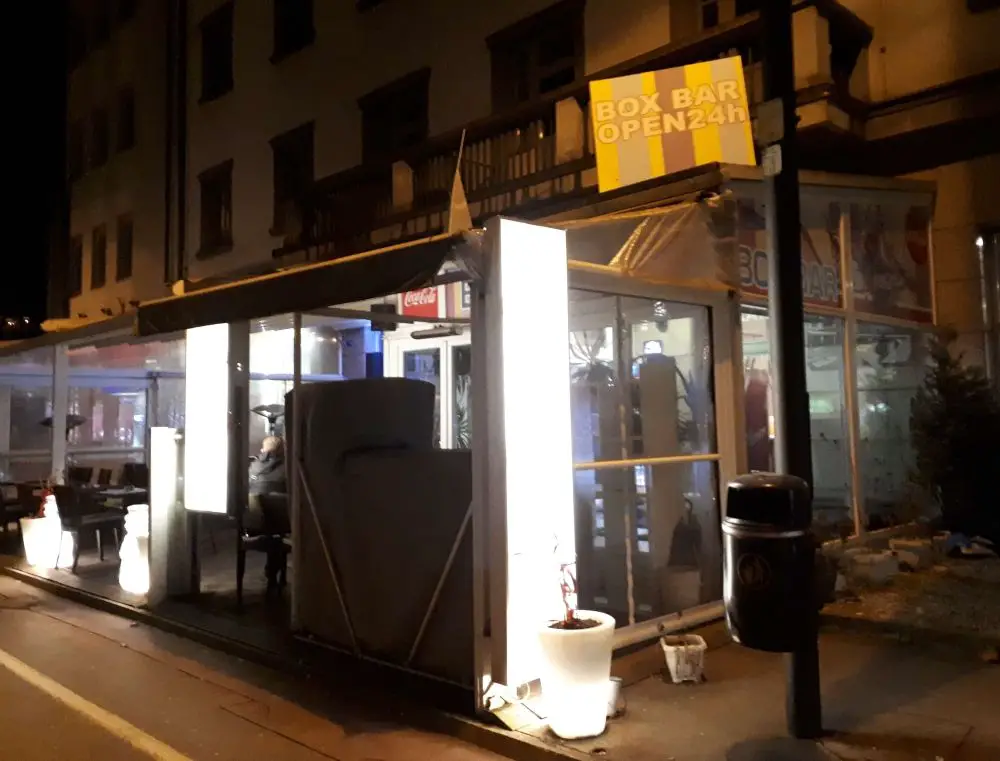
The Box Bar looks like the kind of place you can drink 24 hours a day. Photo: JL Flanner
Between midnight and 6am your best options for food in the capital, as a tourist or visitor without access to a kitchen of your own, are mostly clustered around the train station, close enough to each other that you can browse before making a decision.
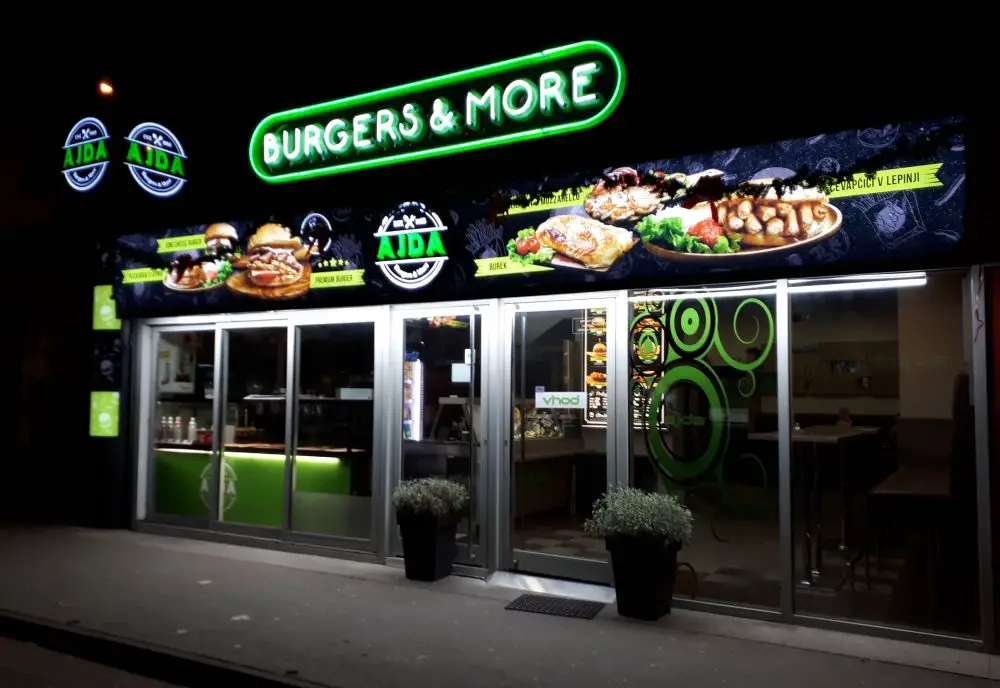
Fans of fried meat and bread are in for a treat, no matter what the clock says. Photo: JL Flanner
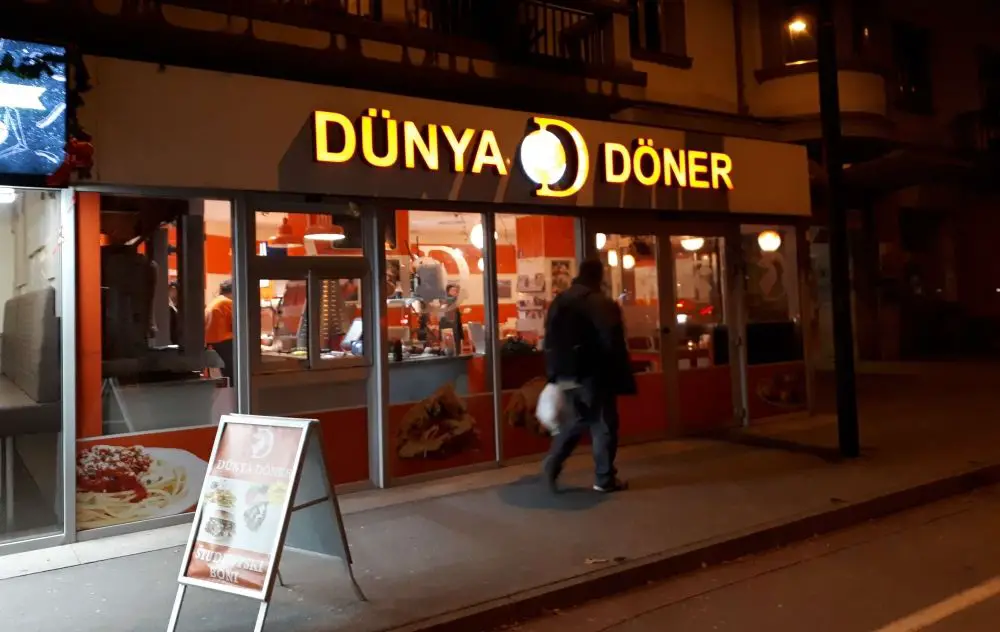
And next door there are kebabs. Photo: JL Flanner
Facing from the station and going from left to right you have a bakery, a café bar (where you can sit and drink till sunrise), a burger place, and a kebab store. Going back a few streets and you can find two burek places. Burek Olimpija has been selling these pastries since 1979, and claims to have been the first such store in the city. Currently it’s slightly hard to find as there’s roadworks obscuring the front of the store, but the bold green signs can still be seen. A rival provider, Nobel Burek, is just a short distance away on Miklošičeva.
On Trubarjeva cesta, next to Dragon bridge, there’s Šeherezada, a fresh, fast Turkish restaurant with kebabs, falafel, salads, and more, and a best option for food well after midnight on the street. Just up the street from this, heading out of the centre, is Abi Falafal, a clean, well-lit place that offers an extensive menu offering Arabian food and open until 01:00 from Thursday to Saturday. (In general, Trubarjeva is the best street for ethnic food, and you can learn more about that here.)
January 16, 2019
Dormice have been hunted for centuries in Slovenia. Nevertheless, unlike many other wild and edible species their numbers continue to persist, which is why polhanje, as the activity is called in Slovenian, managed to continue into the present. The hunting season officially begins every first of October, and different to the majority of such seasons is open to the broader public, anyone who has applied for a special dormouse hunting permit which is relatively easy to get.
Hunting for dormice has changed significantly over the years, as it has gradually moved from an economic necessity towards the preservation of a tradition of socializing at night in the forests, an event of drinking and hanging out that can often conclude without a single mouse being caught.
Dormice were a delicacy in Roman times, and hence the species’ alternative name, edible dormouse, although the habit of eating them only seems to have persisted in Slovenia and Croatia. Let’s take a deeper look into the folklore that helps to put these adorable creatures on a plate, and how it has changed over the centuries.
Habitat and habits of a Slovenian dormouse
In Slovenia, the dormouse, although found almost everywhere, is most common in Inner and Lower Carniola, that is notranjska and dolenjska. In terms of altitude, its habitat is limited by the beech forest, given that beechnuts are an important part of the diet of these animals. The dormouse is an omnivorous creature who likes to eat everything from insects, even tiny birds, to soft fruits, leaves and seeds. Nevertheless, its successful hibernation mostly depends on what it can eat from beech, oak and hornbeam trees.
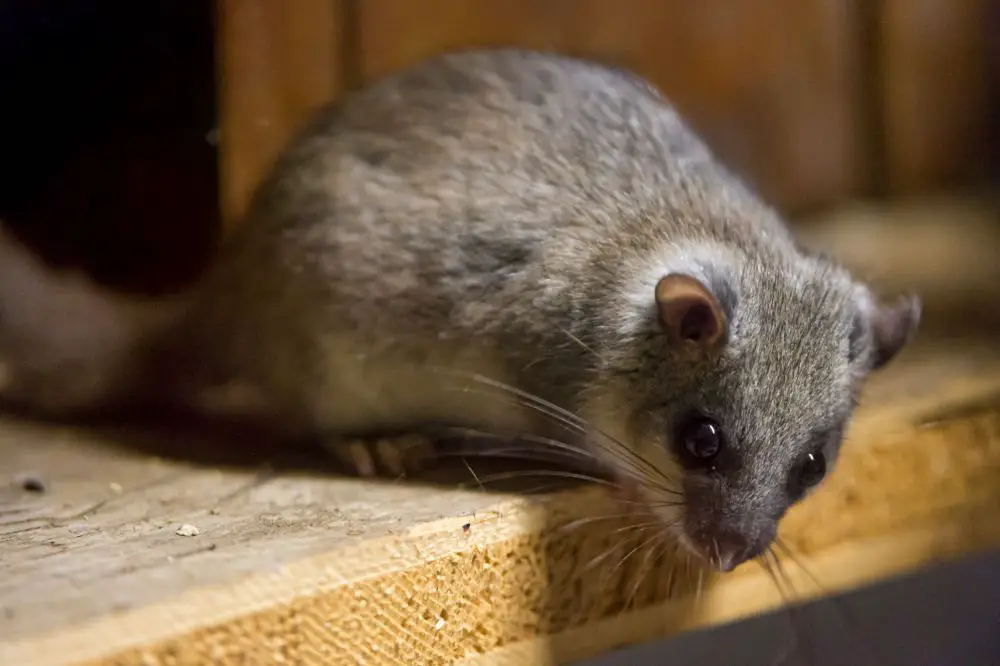
Dormice spend most of the day in holes in the ground or tree trunks, or in between roots, in birdnests, under the roof tops or other shelters. At night they move along the tree branches and are quite good at jumping, said to be even better than squirrels.
Hunting technique
All of this is a very important information when it comes to hunting, as what hunter has to offer in his self-triggering trap must really be very delicious if a fat, autumn dormouse is going to crawl inside and take the bait. Such an animal isn’t going to get caught for a snack it can easily find in the forest.
Typically, bait would be placed into a wooden self-triggering trap, which was put on a long hazel stick and hanged on a tree.

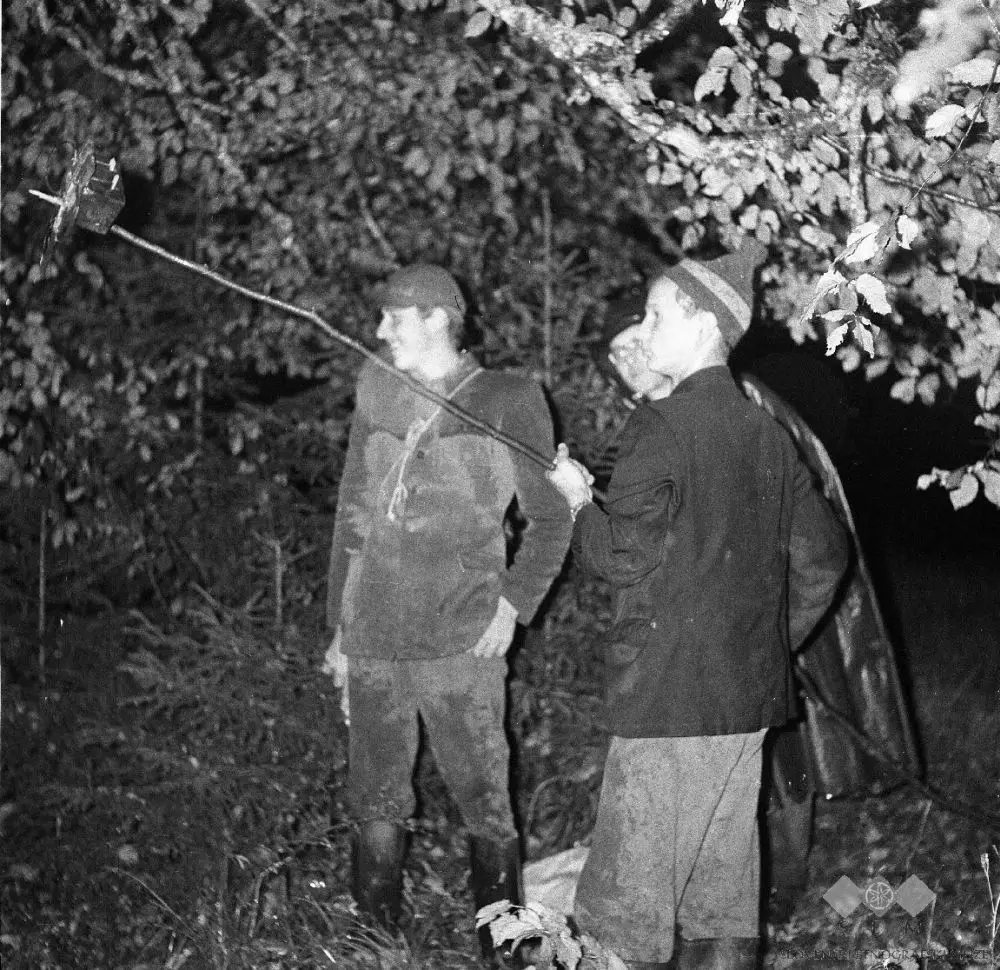
Although the recipe for dormouse bait is every hunter’s cherished secret, the word is out there that it should include a drop of fine pear brandy with a pinch of cinnamon. That is, of course, if you really want to catch, kill, skin, de-gut, cook and eat a dormouse. Most of the people who go on a polhanje today are not that much into hunting, and often spend the night without making a single catch, not caring as long as the company is good, other, less formerly cute foods are available, and the drinks are abundant.
Tradition
The first record of dormice hunt and eating in Slovenia dates back to the 13th century, and was later described in detail by the Slovenian historian Janez Vajkard Valvasor. Dormice used to present an important source of protein for Slovenian peasants, while their fat was also used for healing wounds. Dormice kučma-like hats (polhovka) have since the Birth of Nation (in the middle of the 19th century) been a symbol of Slovenia, and were even banned by the Nazis during WWII. After the war, this hat was placed on the head of the New Year figure Dedek mraz, to make him more Slovenian, not Russian, after the Soviet-Yugoslav split in 1948.
The main goal of polhanje is not to catch a few dozen small animals for a memorable feast, but rather in preserving the tradition of life in nature, and above all such meetings are fun social events that takes place after dark in the forest.
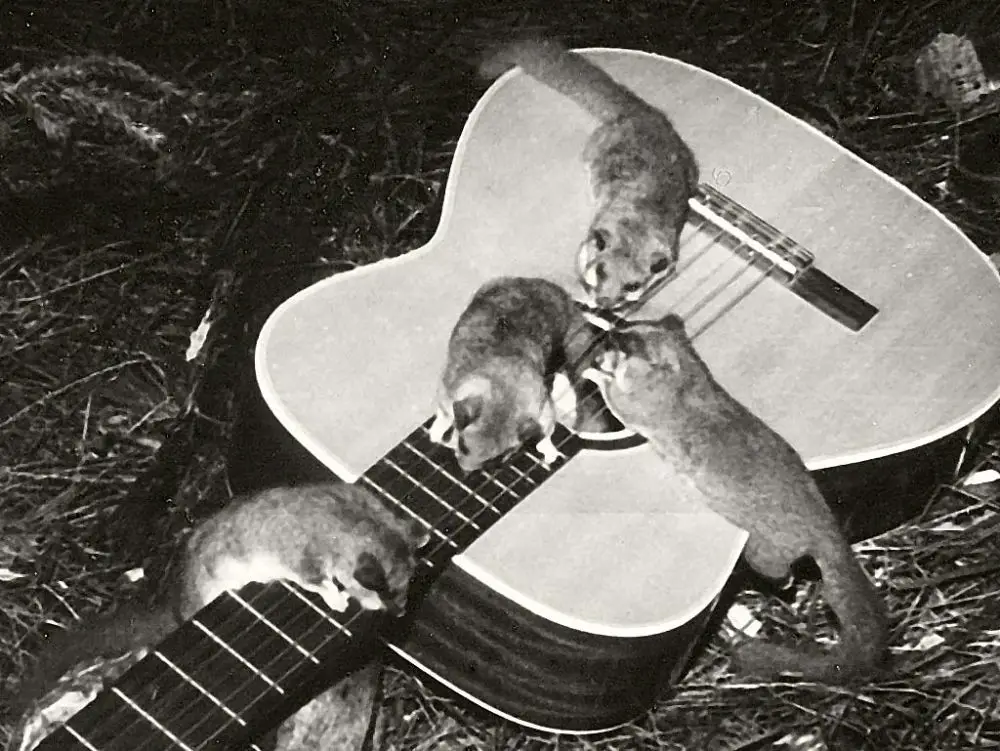
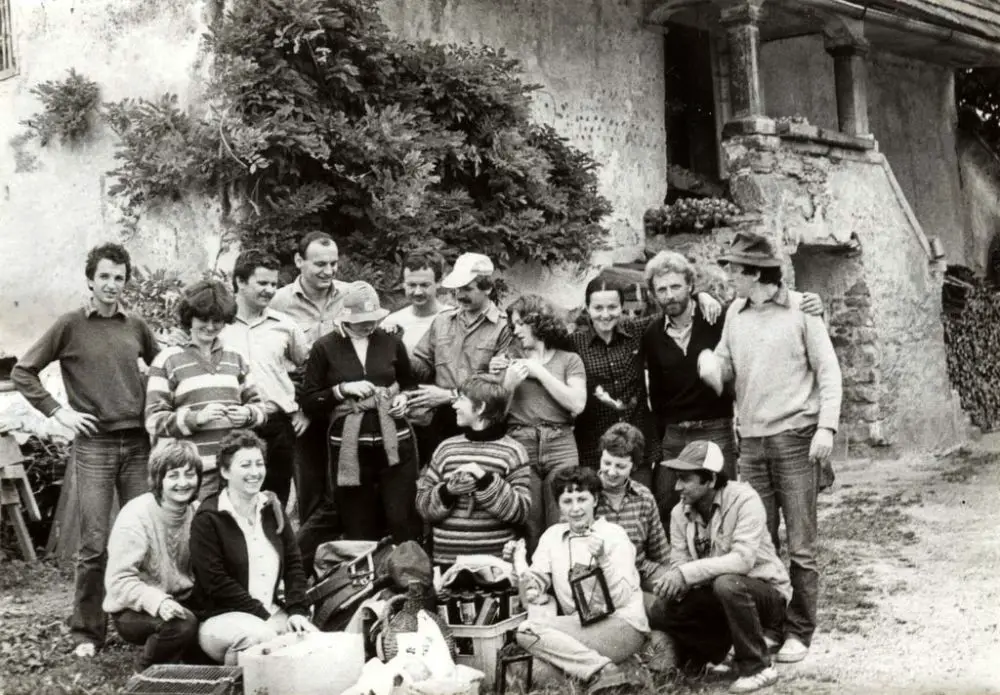
January 16, 2019
In 1895 a decree of the City of Vienna limited the permitted worktime on Sundays to six hours, sparking protest from Slovenian chestnut sellers.
One of the oldest forms of seasonal work migration among Slovenes is that of selling chestnuts, with people moving at the beginning of winter to Vienna to roast chestnuts in the streets of the empire's capital.
In the 1850s there were about one thousand registered chestnut sellers in Vienna, out of which almost one half were from Slovenia, mostly from the areas of Velike Lašče, Ribnica and Kočevje. Chestnut huts were not known in those days, and kostanjarji would roast their chestnuts in the streets and markets from morning to night, no matter the weather.
On today's date in 1895 the City of Vienna limited all forms of work to six hours on Sunday to enforce observation of the Sabbath as a day reserved for rest and religious activity. This brought complaints from the chestnut sellers, as sales were best on Sundays. The authorities, however, insisted on the shortened hours and only allowed for extensions on the last Sunday before Christmas and in Prater, a large public park in Vienna.
At the end of the season Slovenian kostanjarji mostly returned to their homes, while some remained in the city. The latter were mostly from the Ribnica region, who established handicraft shops In Vienna and would continue their business selling their woodcraft items, also called suha roba (lit. ‘dry goods’) in the streets and markets of Vienna for the rest of the year.
